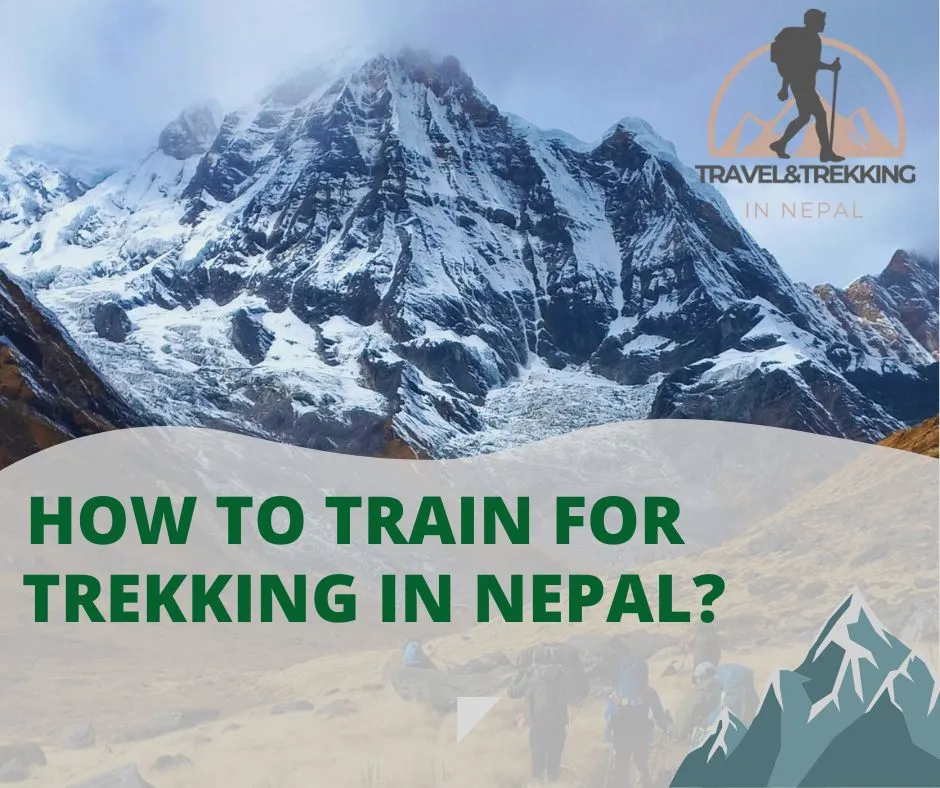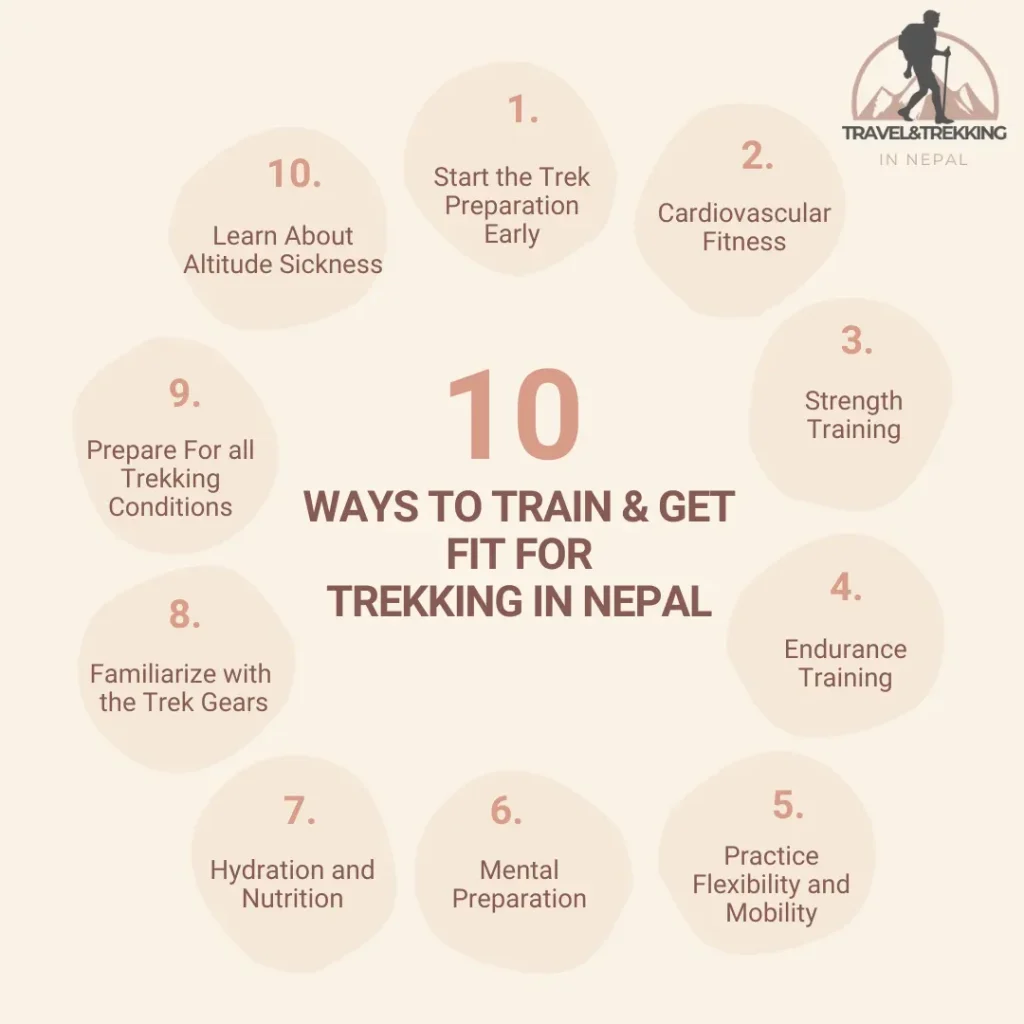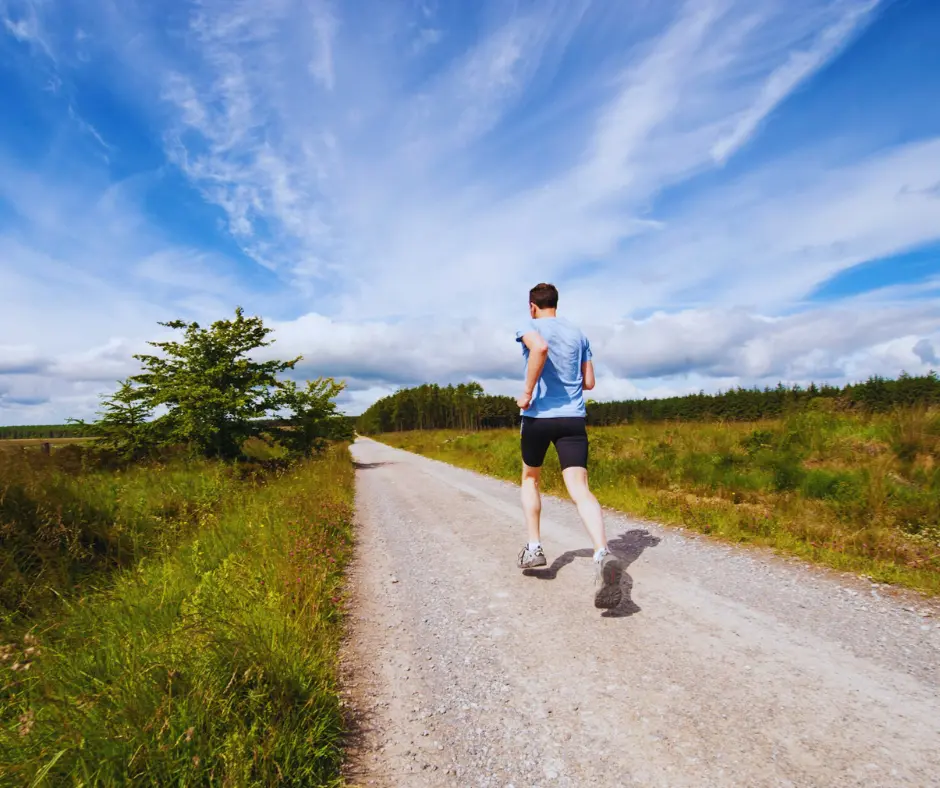How to Train and Prepare for Trekking in Nepal?

I remember standing at the foot of the Annapurna Circuit trek in Nepal, my backpack snugly fitted against my shoulders, the cool mountain air filling my lungs. It had been months of preparation leading up to this moment. I wasn’t always the most athletic person, but the dream of trekking in Nepal’s majestic Himalayas motivated me to push my limits. I had read countless guides on training tips for trekking in Nepal, but it wasn’t until I started the journey that I truly realized how critical my preparation had been.
If you're looking to trek in Nepal, know that preparation is crucial. Training is essential whether you're aiming for Everest Base Camp, Gokyo Valley Treks, or the Annapurna Circuit. This guide will walk you through everything you need to know about how to train for trekking in Nepal, from physical fitness to mental preparation. By the end of this article, you’ll have the knowledge and confidence to tackle those Himalayan trails.
(Disclaimer: I’m not a fitness expert or a coach. But I did tons of research on the internet, including consulting fitness experts and personal trainers, before my trek — and I know this plan worked for me. You should always consult your doctor before starting a new fitness plan.)
In this blog, you will learn;
Why does training matter before trekking in Nepal?
What kind of physical and strength training you will need?
How preparing mentally will help you in the successful completion of the trek?
Why Training Matters for Trekking in Nepal?
Trekking in Nepal is not just a regular hike. The trails are long and often at high altitudes, with thin air and unpredictable weather. On popular routes like the Everest Base Camp trek, you’ll be trekking at altitudes of up to 5,364 meters (17,598 feet), where the air contains about 50% less oxygen than at sea level (Source: National Library of Medicine). Without proper training, you risk not only physical exhaustion but also potentially life-threatening conditions like altitude sickness.
Training for trekking in Nepal is essential due to the physical and environmental challenges you face. Trekking involves long hours of walking, often on rugged terrain and at high altitudes. Without proper preparation, you risk injury and altitude sickness, which can ruin your adventure.
A successful trek starts months before you step foot on the trail, and the more prepared you are, the more enjoyable and safe your experience will be. Let’s dive into how you can effectively train for trekking in Nepal.
10 Ways to Train and prepare For Trekking in Nepal

1. Start the Trek Preparation Early
Preparation for trekking in Nepal should begin at least 3-6 months before your departure. The earlier you start, the more time you’ll have to build the fitness and stamina required for long days on the trail. Early preparation also gives you time to adjust your training if you encounter any setbacks, such as injuries or scheduling conflicts.
Why Start Early?
Building Endurance Takes Time: Trekking in Nepal requires long days of hiking—often 6-8 hours per day—on varied terrain. Building the endurance needed for such long days doesn’t happen overnight. It takes consistent effort over several months to condition your body for the rigors of trekking.
Prevent Injuries: By starting early, you can gradually increase your training intensity, which helps reduce the risk of overtraining injuries. It’s important to give your muscles, joints, and cardiovascular system time to adapt to the increasing demands you’ll place on them.
Mental Preparation: Trekking in Nepal can be mentally challenging. By starting your preparation early, you’ll have time to build your mental resilience. The more familiar you are with pushing through discomfort and fatigue during training, the better equipped you’ll be to handle the mental challenges of the trek.
The earlier you start, the more time you’ll have to adapt to setbacks, whether that’s an injury, illness, or simply needing more time to build your fitness level.
2. Cardiovascular Fitness

Cardiovascular fitness is one of the most crucial aspects of training for a trek in Nepal. Trekking involves sustained periods of activity, often at high altitudes where oxygen levels are lower, which puts extra strain on your heart and lungs. Improving your cardiovascular fitness will help you maintain energy levels and reduce fatigue during long days on the trail.
How to Build Cardiovascular Fitness
Aerobic Exercises: Incorporate aerobic exercises such as running, swimming, cycling, or brisk walking into your training routine. Aim for 30 to 45 minutes of moderate-intensity cardio 4 to 5 times per week. Gradually increase the duration and intensity of your workouts as your fitness improves.
Practice Hiking: Since trekking in Nepal involves a lot of uphill and downhill hiking, it’s important to practice walking or running on inclines. Find hills in your local area or use a treadmill set at an incline to simulate the steep ascents you’ll encounter on the trail.
High-Intensity Interval Training (HIIT): For a more time-efficient way to boost your cardiovascular fitness, incorporate HIIT workouts into your routine. HIIT alternates between short bursts of intense exercise and periods of rest or low-intensity activity. A study by the American College of Sports Medicine found that HIIT significantly improves cardiovascular endurance in less time compared to steady-state cardio.
Improving your cardiovascular fitness will make a huge difference in your ability to handle the physical demands of trekking at high altitudes. You’ll find yourself better able to maintain a steady pace, recover more quickly from strenuous sections, and enjoy the trek without feeling constantly out of breath.
3. Strength Training
Strength training is another vital component of your trekking preparation. While cardiovascular fitness helps you keep going, strength training ensures that your muscles can handle the physical demands of the trek, such as carrying a backpack, navigating uneven terrain, and dealing with steep ascents and descents.
Key Strength Training Exercises
Squats: Squats are one of the best exercises for building lower-body strength, targeting your quads, hamstrings, and glutes. Start with bodyweight squats and progress to adding resistance with dumbbells or a barbell. Strong legs are crucial for trekking, especially when you’re dealing with long uphill stretches.
Lunges: Lunges help improve leg strength and stability. They also mimic the movement patterns you’ll use while hiking. Include forward, reverse, and walking lunges in your routine to target different muscle groups in your legs.
Step-Ups: Step-ups are great for building the strength and endurance needed for uphill trekking. Use a sturdy bench or step, and perform step-ups with or without added weight to simulate climbing steep sections of the trail.
Core Exercises: A strong core helps with balance and stability, which is particularly important when trekking with a heavy backpack on uneven terrain. Include exercises like planks, Russian twists, and leg raises to strengthen your core muscles.
According to a study published in the BMJ journal, strength training lowered injuries by 68%, making it the clear winner in terms of injury prevention compared to general physical exercise and stretch training. Building strength is not just about improving performance—it’s also about injury prevention, ensuring that your body can handle the demands of trekking without breaking down.
4. Endurance Training
Trekking in Nepal requires endurance—the ability to hike for long hours over multiple days. Your body needs to be conditioned to withstand long durations of physical activity without tiring out too quickly. Building endurance is about gradually increasing your stamina and preparing your body for the prolonged effort required on the trail.
How to Build Endurance
Long Hikes: Start doing long hikes into your training plan. Begin with shorter hikes and progressively increase your mileage. Aim for at least one long hike per week, gradually working up to hikes that last 6-8 hours. This will help your body adapt to the demands of long trekking days.
Time on Feet: Focus on spending more time on your feet, whether that’s through walking, hiking, or simply standing more during the day. This helps condition your body to handle the long hours of trekking and reduces the risk of muscle fatigue during your trek.
Building endurance is about gradually increasing your capacity for sustained effort, allowing you to maintain a steady pace over long distances without burning out.
5. Practice Flexibility and Mobility
Flexibility and mobility are often overlooked aspects of trekking training, but they’re crucial for preventing injuries and ensuring that your muscles and joints remain limber during long days on the trail. Improving your flexibility and mobility will also help you navigate the uneven and challenging terrain you’ll encounter in Nepal.
How to Improve Flexibility and Mobility
Stretching: Incorporate stretching into your training routine to improve flexibility and reduce muscle tightness. Perform dynamic stretches (such as leg swings and arm circles) before workouts to warm up your muscles, and static stretches (such as hamstring stretches and quad stretches) after workouts to improve flexibility. Focus on stretching your legs, hips, and lower back—areas that are particularly important for trekking.
Yoga: Yoga is a great way to improve flexibility, balance, and mental focus. Many trekkers find that practicing yoga helps alleviate stiffness and tension during long days on the trail. Yoga poses like downward dog, pigeon pose, and warrior pose can help stretch and strengthen the muscles you’ll use while trekking.
Incorporating flexibility and mobility exercises into your training will help you stay injury-free and feel more comfortable on the trail, especially after long days of hiking.
6. Mental Preparation
Trekking in Nepal isn’t just physically challenging—it’s mentally demanding as well. The combination of long days, high altitudes, and changing weather conditions can take a toll on your mental stamina. That’s why mental preparation is just as important as physical training.
How to Mentally Prepare for Trekking
Mindfulness and Meditation: Practicing mindfulness and meditation can help you stay calm and focused during your trek. These practices teach you how to manage stress and discomfort, which can be invaluable when you’re facing tough sections of the trail. Spend a few minutes each day meditating or practicing deep breathing exercises to build your mental resilience.
Positive Visualization: Visualizing yourself completing your trek can boost your confidence and motivation. Spend time imagining the beautiful landscapes, the sense of accomplishment you’ll feel, and the joy of reaching your trekking goals. Visualization can help you stay positive and motivated, even when the trek gets tough.
Break Down Challenges: When you’re facing a long day of trekking, it can be overwhelming to think about the entire distance you need to cover. Instead, break the trek down into smaller, more manageable sections. Focus on reaching the next rest stop or landmark, rather than worrying about the entire day’s journey. This strategy can help you stay mentally focused and prevent burnout.
By preparing your mind as well as your body, you’ll be better equipped to handle the mental challenges of trekking in Nepal. You’ll be able to stay calm and focused, even in the face of adversity, which will make your trek more enjoyable and successful.
7. Hydration and Nutrition - Fuel Your Body

Proper hydration and nutrition are critical for supporting your training and ensuring you’re in top condition for your trek. Fueling your body with the right nutrients will help you recover from workouts, build endurance, and maintain energy levels during your trek.
How to Stay Hydrated and Nourished?
Hydration: Staying hydrated is essential, especially when training at higher altitudes where dehydration can set in quickly. Aim to drink at least 2-3 liters of water daily, and increase your intake on longer training hikes. During your trek, carry purification tablets to ensure you have access to clean drinking water.
Balanced Diet: Focus on a balanced diet that includes a mix of carbohydrates, proteins, and healthy fats. Carbohydrates provide the energy you need for long hikes, while protein helps repair and build muscles. Healthy fats, such as those found in nuts, avocados, and olive oil, support overall health and help keep you full and satisfied.
Pre-Trek Nutrition: In the weeks leading up to your trek, make sure you’re eating a nutrient-dense diet that supports your training. Incorporate plenty of fruits, vegetables, lean proteins, and whole grains into your meals to fuel your body with the vitamins and minerals it needs to stay strong and healthy.
Proper hydration and nutrition are key components of successful trekking. By fueling your body with the right nutrients and staying hydrated, you’ll be better equipped to handle the physical demands of your trek.
8. Familiarize With the Trek Gears
Familiarizing yourself with your gear before you hit the trail is an essential part of your preparation. Check the quality and learn how to use the gears properly.
How to Get Comfortable with Your Gear?
Break in Your Boots: One of the most important pieces of gear you’ll use during your trek is your boots. Make sure to break them in well before your trek by wearing them on training hikes. This will help prevent blisters and ensure that your boots are comfortable and supportive.
Test Your Backpack: Your backpack will be your constant companion during your trek, so it’s important to make sure it fits well and can carry all your essentials comfortably. Pack it with the gear you plan to bring on your trek and practice hiking with it on training hikes to get used to the weight and distribution.
Use Your Clothing: Get used to the clothing you’ll be wearing on your trek, including your layers. Practice adjusting your clothing during training hikes to stay comfortable in varying weather conditions. This will help you avoid issues like overheating or getting too cold during your trek.
Familiarizing yourself with your gear will not only make your trek more comfortable but also help prevent potential gear-related issues on the trail.
9. Prepare For all Trekking Conditions
To truly prepare for trekking in Nepal, it’s important to simulate the conditions you’ll experience on the trail. This includes practicing hiking at different altitudes, on varied terrain, and in different weather conditions.
How to Simulate Trekking Conditions?
Altitude Training: If possible, practice hiking at higher altitudes before your trek. This will help your body acclimatize to the thinner air and prepare you for the challenges of high-altitude trekking.
Varied Terrain: Incorporate hikes on rocky, uneven terrain into your training. This will help you build the balance and stability needed to navigate the rugged trails in Nepal.
Weather Conditions: Practice hiking in different weather conditions, including rain, wind, and cold temperatures. This will prepare you for the unpredictable weather in the Himalayas.
By simulating trekking conditions during your training, you’ll be better prepared for the challenges of the trail.
10. Learn About Altitude Sickness and its Symptoms
Altitude sickness is a serious concern for trekkers, as most of the trails in Nepal reach altitudes of over 4,000 meters (13,000 feet). Learning the symptoms of altitude sickness and how to respond to them is crucial for staying safe during your trek.
Common Symptoms of Altitude Sickness
Headaches: One of the earliest and most common symptoms of altitude sickness.
Nausea and Vomiting: Many people experience gastrointestinal symptoms at higher altitudes.
Dizziness and Fatigue: Feeling lightheaded or unusually tired can be a sign that your body is struggling to adjust to the altitude.
Shortness of Breath: Difficulty breathing, even at rest, is a serious symptom that requires immediate attention.
If you experience any of these symptoms during your trek, it’s important to stop, rest, and, if necessary, descend to a lower altitude. Proper acclimatization, hydration, and listening to your body are key to preventing altitude sickness.
Conclusion
Training for trekking in Nepal requires dedication, consistency, and a well-rounded approach. By following the tips and strategies outlined in this guide, you'll be better equipped to handle the physical and mental challenges of trekking in the Himalayas.
Proper training enhances your trekking experience and ensures you are ready to face any challenges. Invest time and effort in your preparation to make the most of your trekking adventure. With the right training, you'll enjoy the breathtaking landscapes and unique experiences that Nepal has to offer.
